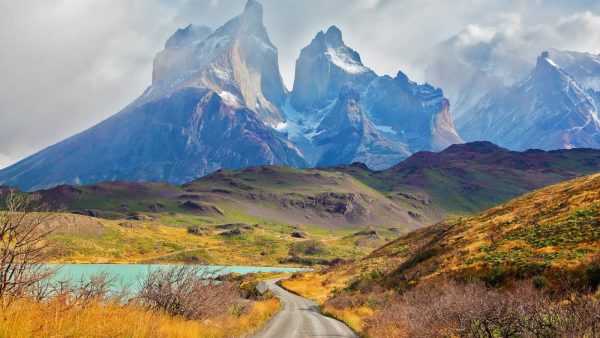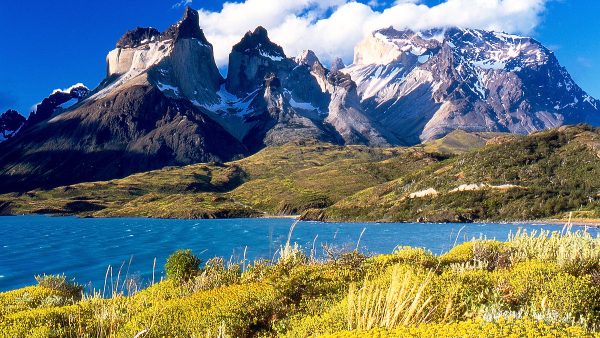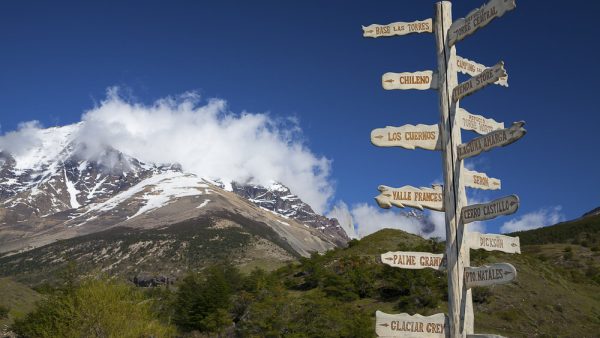The flora and fauna of the Torres del Paine Park is a treasure coveted by documentalists and photographers from around the world and you, as a tourist, will also have the opportunity to observe them within a very short distance.
However, as indicated by CONAF (National Forestry Corporation), one must always bear in mind the unpredictability of nature and the potential risks associated with direct contact with nature. Therefore, always remember to respect the trails of the park and take medication with you if you suffer from any allergy or illness.
FLORA
As it is said that in Torres del Paine National Park you can experience the four seasons of the year in a single day, it is also possible to observe a flora as varied as the climate with four vegetation types:
- Pre-Andean scrubland that occupies most of the surface of the park, present in plateaus and plains.
- Deciduous Magellanic forest composed of tree communities, mostly by Lenga (Nothofagus pumilio).
- Patagonian steppe that covers plains and plateaus in the region. Characterized by the presence of prostrate shrubs, plant cushions and grasslands.
- Andean Desert which corresponds to all the territories that, due to the climatic conditions determined by altitude, have vegetation devoid of tall trees and shrubs. The plants live much of the year in vegetative recess.
In your walk in the park you can also see a great variety of trees and plants. Then we share with you five of the most representative species in the area and where to find them.
- Notro (Embothirium Coccineum) is a small red-flowered tree that grows in thickets and can be seen on the trail that connects Las Torres Lodge with the Los Cuernos camp and in the valley Of Pingo.
- Calafate (Berberis Microphylla): famous black fruit bush and yellow flower that can be found on the path that links the Las Torres sector with the Serón encampment.
- Armeria (Armeria Marítima): medicinal herb easily visible by its voluminous pink flower. This plant is present in the path that connects the goal Laguna Amarga with the goal Sarmiento.
- Capachito (Calceolaria Uniflora): an orange-flowered herb that grows on rocky terrain such as the base of Las Torres.
- Artichoke (Lathyrus Nervosus): Easy to confuse with lavender, this purple herb and thin petals can be seen in the French valley if searched carefully.
FAUNA
The diversity of environments described above results in the presence of a large number of mammals that inhabit the park. The most wanted specimen, and also more feared, is the puma (felis concolor) that lives in the eastern sector. If you want to see the so-called “mountain lion”, prefer the months of November and December when the pups come out of their burrows and the guanacas stop the chulengos, prey to the pumas.
Other emblematic species of Torres del Paine are mentioned below:
- Huemul (Hippocamelus bisulcus): This endangered deer is safely under the park asylum. Of brown color and herbivorous condition, the huemul can be sighted in the western sector of park, although with difficulty, since it mimetizes very well with the vegetation of the zone.
- Guanaco (Lama guanicoe): reddish-brown camelid with white spots, easy to see in the park, especially around Amarga lagoon, Azul lagoon and Sarmiento lake.
- Zorro Culpeo (Canis culpaeus): also known as a red fox for the reddish coat of its head and legs. This little animal can be seen in the Gray sectors, Pehoé camping and near the park administration.
- Zorro Chilla (Canis griseus): very similar to the Culpeo fox, this specimen has a grayish color with yellow spots and does not exceed sixty centimeters. It inhabits the sectors of lagoon Azul, Sarmiento and Lake Nordenskjöld.
- Chingue (Conepactus chinga): A solitary and omnivorous animal, better known as a skunk, measures about 70 centimeters and expels a strong odor as a defense mechanism. Present in the sectors of lagoon Amarga, Sarmiento and Azul.
The avifauna of the park presents a great diversity, being able to observe approximately 100 species, among which they stand out:
- Condor (Vultur gryphus)
- Eagle (Geranoaetus melanoleucus)
- Black-necked Swan (Cygnus melanocoryphus)
- Flamingo (Phoenicopterus chilensis)
- Anteater duck (Anas specularis)
- Black carpenter (Campephilus magellanicus)
- Kingfisher (Ceryle torquata)
- Patagonian cometocino (Phrygilus patagonicus)
- Diuca (Diuca diuca)
- Chincol (Zonotrichia capensis).
Read More



